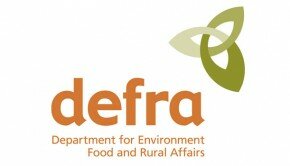Part 2A contaminated land regime – has the dragon lost its fire?
With Defra funding slashed to £2 million, local authorities will look for easy legal targets with deep pockets.
Contaminated Land Capital Projects Programme
The Defra Capital Projects Programme provides funding to local authorities for Part 2A intrusive site investigations and approved remediation work.
Between 2000 and 2010, over 1,100 projects were funded in England.
High risk sites such as gassing landfills under housing estates were the early targets for Part 2A enforcement. There was clear technical evidence of unacceptable health risks and Defra funding would pay the remediation costs if the polluters and developers could not be found.
Part 2A funding was pulled in Wales by the Welsh Government some years ago.
In England, the 2013/14 grant allocation has now been cut to £2 million.
Local Authority Contaminated Land Officers (CLOs) will be wondering if the Part 2A regime has become impotent.
Local Authority Part 2A Survey
A recent survey of CLOs looked at Part 2A enforcement across 34 local authorities.
Resources
- 21% of LAs do not have a budget for contaminated land.
- Of those that do have a budget, 53% have less than £4,999 a year.
- Only 14% have a CLO dedicated solely on contaminated land duties.
Enforcement Action
- 83% of LAs have not carried out an intrusive site investigation under Part 2A since April 2012.
- 3% of LAs have determined a site under Part 2A since April 2012.
- 57% of LAs have become less confident in the effectiveness of Part 2A since April 2012.
Challenges
- Lack of resources and loss of staff.
- Uncertainty of whether the Defra Capital Grant Scheme will continue.
- Part 2A contaminated land regime is not classed as a Council priority.
Revised Contaminated Land Statutory Guidance
In April 2012 the Contaminated Land Statutory Guidance was replaced by shorter guidance with new objectives to encourage greater consistency in Part 2A enforcement.
LAs should now focus on Category 1 and Category 2 sites where there are unacceptable risks to human health.
Category 3 and 4 sites are not to be subject to Part 2A enforcement and new Category 4 Screening Levels (C4SLs) are being introduced to help the initial screening for 6 common types of soil contaminants.
A group of consultants under the leadership of CL:AIRE have set up a National Panel of Experts to help CLOs decide whether a site is “contaminated land” in borderline Category 2 and Category 3 cases.
The CLOs will be subject to interviews by the Panel on their technical decisions and the Panel’s decisions will then be published to help other LAs.
What next for the contaminated land regime?
The Part 2A regime is losing its fire power.
- There is almost no Defra funding available to engage technical experts to help designate sites.
- CLOs are taking on other roles such as air quality and dedicated officers are becoming rare.
- CLOs will be wary of submitting applications to the National Panel of Experts.
- Since Part 2A is a “matter of last resort”, LA will continue to wait for the planning process to deal with contaminated sites.
Deep pockets liability
During the House of Lords debates on the Environment Bill, concerns were raised that Part 2A would result in “deep pockets liability”. This could now happen more frequently.
With the lack of funding, CLOs will be encouraged to focus on Category 1 and Category 2 sites with easy legal targets – ie Class A “causers” or “knowing permitters” with sufficient funds to pay for the necessary soil and groundwater remediation.
Developers and chemical companies will in theory now be subject to greater liability risks.
But don’t worry too much…..
Thousands of contaminated sites in England and Wales with significant human health risks will not be subject to any regulatory action.
Full Article Here:






